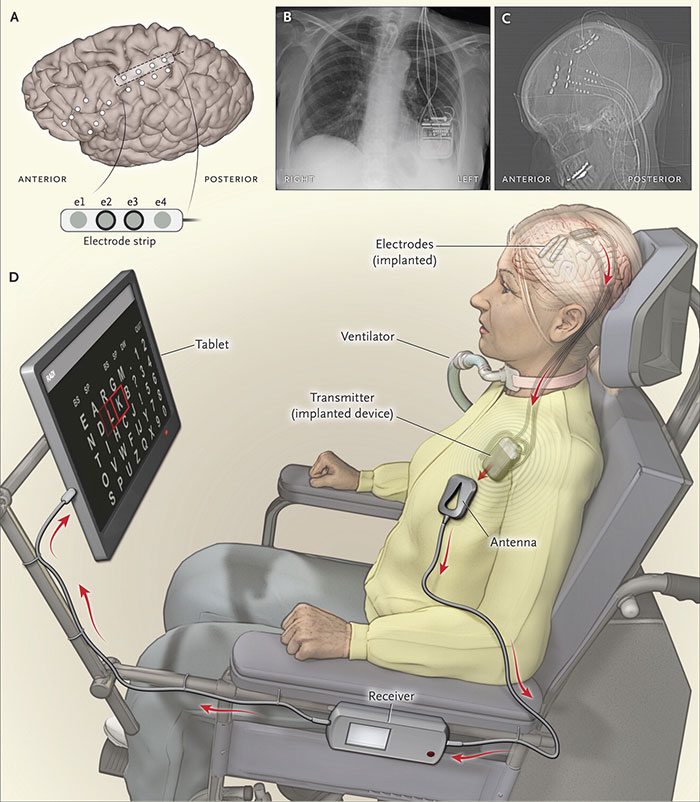In a world first, a paralysed woman in the Netherlands has been fitted with a new type of brain implant that allows her to communicate with nothing but her thoughts. Hanneke de Bruijne, a mother of three, was diagnosed with amyotrophic lateral sclerosis (ALS) in 2008, a condition which was made famous in 2014 with the “ice bucket challenge” trend on social media.
ALS is currently an incurable neurological condition that causes the death of motor neurons in the body. Fifteen new cases are diagnosed each day in the US alone. As the disease progresses, sufferers such as de Bruijne lose the ability to move, write, speak and even swallow. They are eventually trapped in their own body, with no way of being able to communicate with those around them.
De Bruijne, who now breathes with the assistance of a mechanical ventilator, received the life changing brain implant last year. “The implant gives me freedom, independence and safety,” de Bruijne wrote in an email composed on a tablet linked to her implant. “It enables me to enjoy my garden and going outdoors in nature.”
The new implant works with a computer interface to help patients spell out words and sentences. This is a game changer for paralysed patients who cannot speak or otherwise move to communicate. “This is a world first,” says lead researcher Nick Ramsay, from the University Medical School at Utrecht. “It is a fully implantable system that works at home without the need for any experts to make it work.”
Unlike other systems, (such as the one famously used by Stephen Hawking) this new implant does not rely on the user having any physical movement at all. It is effectively a mind reader.

The device is surgically implanted into the brain, with two electrodes placed over the motor cortex region of the brain, which controls movement. These electrodes are connected to a pacemaker-sized transmitter implanted into de Bruijne’s chest, and this transmitter is able to wirelessly communicate with a computer program displayed on a screen in front of her.
When de Bruijne watches the screen, she’ll see a square moving over letters. Once the square has landed on a letter she wants to use, she must imagine moving her right hand to click on the letter. Her brain passes on the same signal as if she could in fact move her hand, which is then processed by the computer program.
Although still in its early stages, the system is great news not just for ALS patients, but those of many other diseases which can lead to someone being locked in their body such as strokes, multiple sclerosis and some brain injuries.







